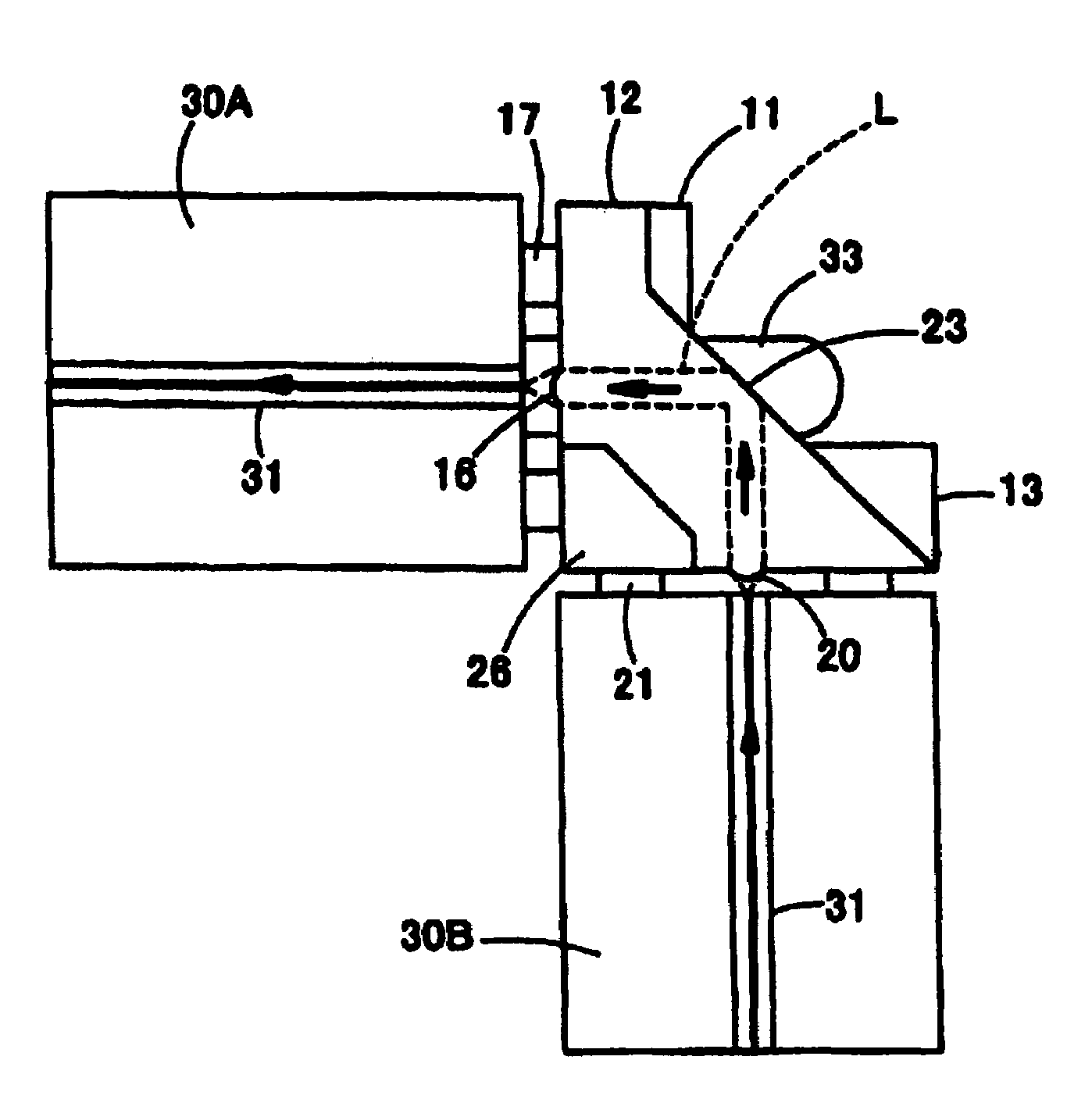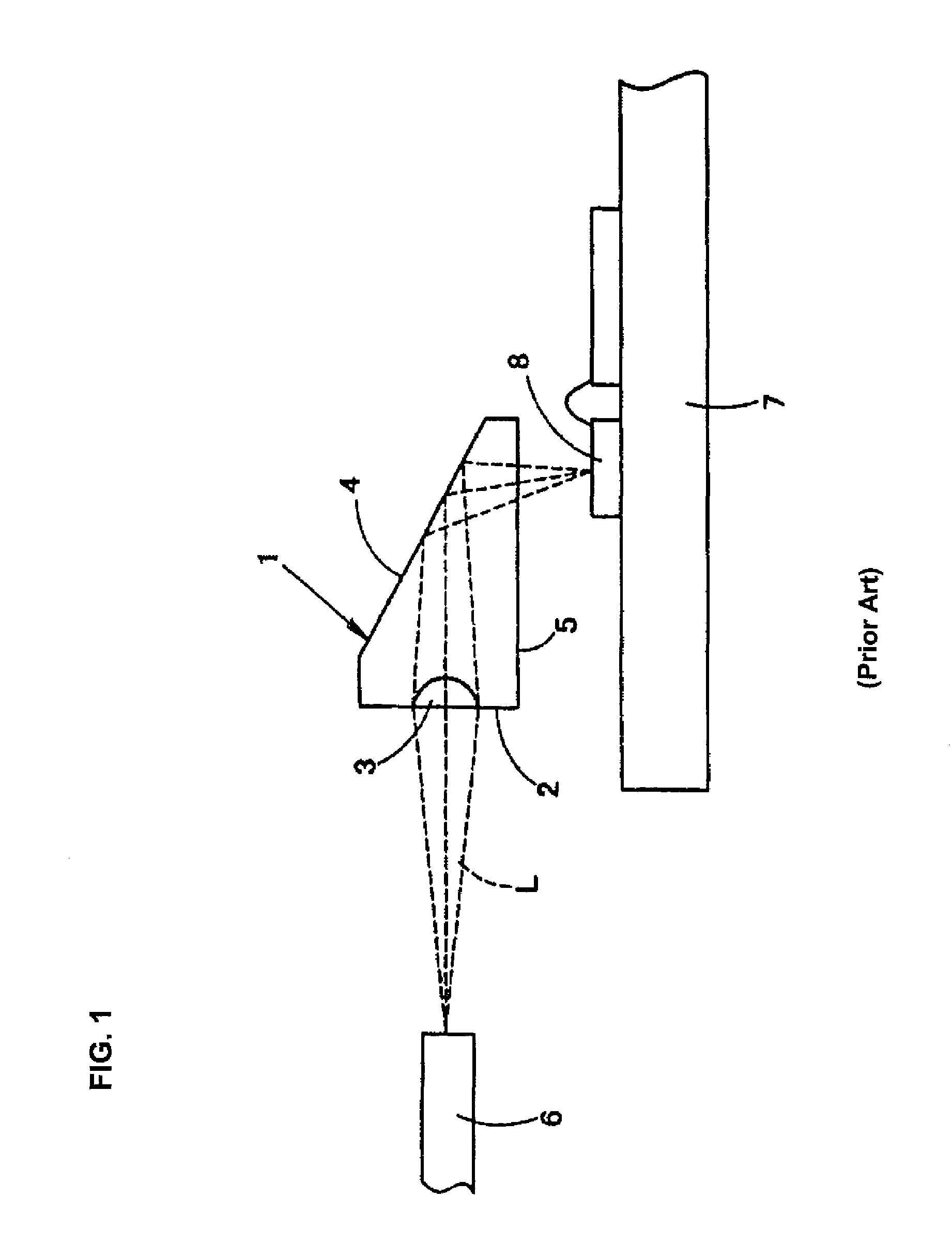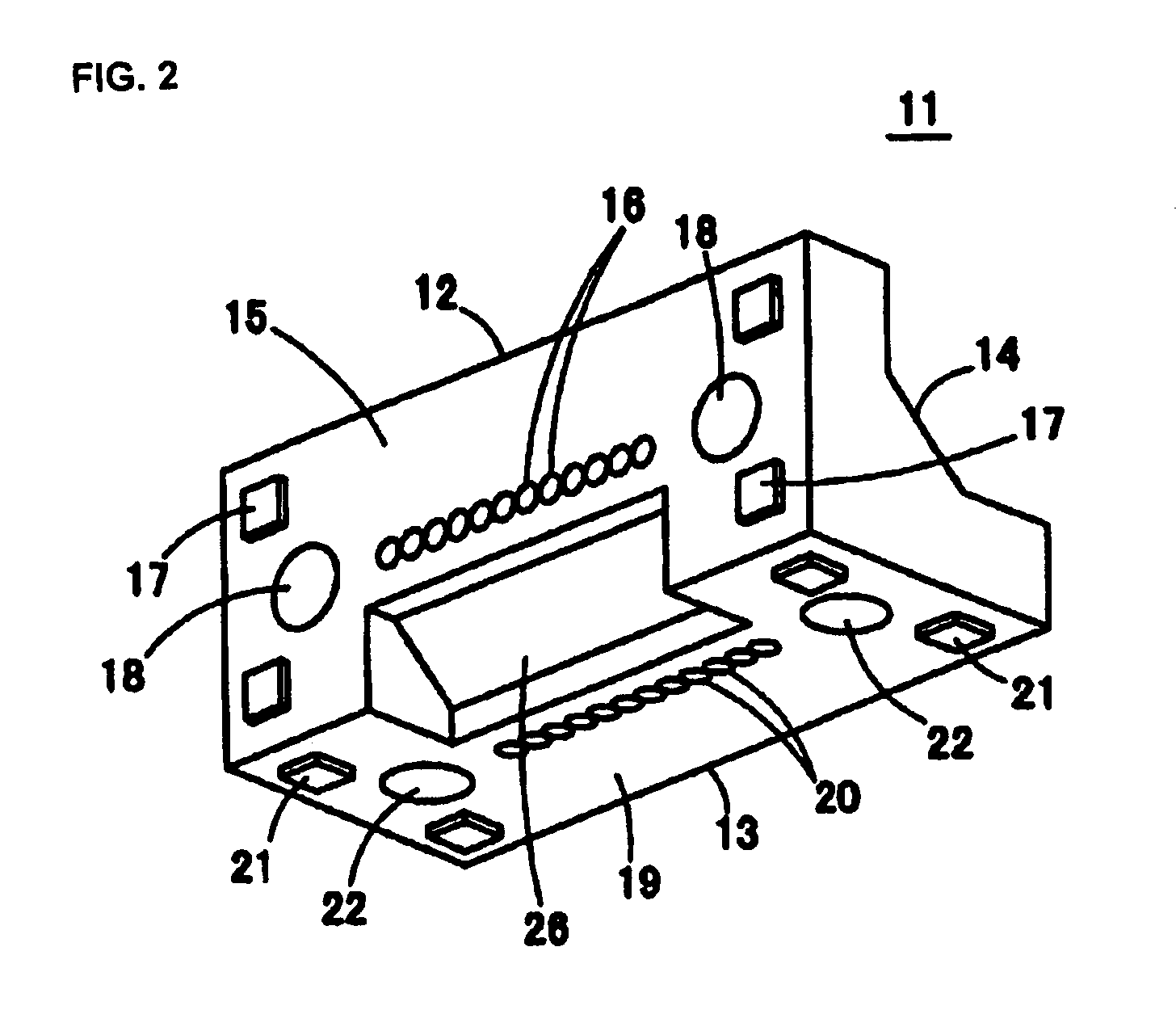Optical path change type optical coupling element
a technology of optical coupling elements and optical paths, which is applied in the direction of optical elements, mountings, instruments, etc., can solve the problems of not being able to use and it is difficult to assembly the optical path converting type optical coupling elements b>1/b>
- Summary
- Abstract
- Description
- Claims
- Application Information
AI Technical Summary
Benefits of technology
Problems solved by technology
Method used
Image
Examples
Embodiment Construction
[0050]The embodiments of the present invention will next be concretely explained. However, the present invention is not limited to the following embodiments, but can be naturally modified in the scope not departing from the technical idea of the present invention.
[0051]FIG. 2 is a perspective view showing an optical path converting type optical coupling element 11 in accordance with one embodiment of the present invention and seen upward on the front face side. FIG. 3 is a perspective view seen downward on the rear face side of the optical path converting type optical coupling element 11. FIGS. 4, 5 and 6 are respectively a front view, a bottom view and a plan view of the optical path converting type optical coupling element 11. FIG. 7 is an X-X line sectional view of FIG. 4. FIG. 8 is a Y-Y line sectional view of FIG. 4. This optical path converting type optical coupling element 11 is entirely integrally molded by transparent resin. For example, the optical path converting type opt...
PUM
 Login to View More
Login to View More Abstract
Description
Claims
Application Information
 Login to View More
Login to View More - R&D
- Intellectual Property
- Life Sciences
- Materials
- Tech Scout
- Unparalleled Data Quality
- Higher Quality Content
- 60% Fewer Hallucinations
Browse by: Latest US Patents, China's latest patents, Technical Efficacy Thesaurus, Application Domain, Technology Topic, Popular Technical Reports.
© 2025 PatSnap. All rights reserved.Legal|Privacy policy|Modern Slavery Act Transparency Statement|Sitemap|About US| Contact US: help@patsnap.com



